Dec
21
2020
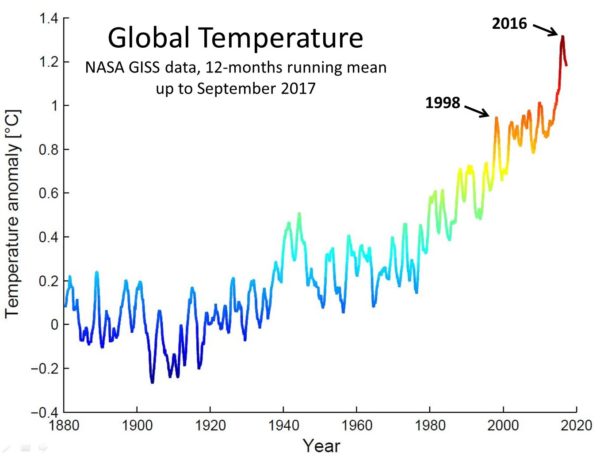 The year 2020 will be either the hottest year on record, or just behind the hottest year, 2016. The top 10 hottest years have all been from 1998 and later, with every year starting at 2013 being in the top 10. 2020 will now knock 1998 off the list, making the 10 warmest years all since 2005. The reason 1998 stuck on the list so long is because it was an outlier El Nino year, a weather pattern that tends to produce warmer weather. Next year, 2021, is likely to be a bit cooler because it is a La Nina weather pattern, which tend to be cooler. What does all this mean for the global warming debate?
The year 2020 will be either the hottest year on record, or just behind the hottest year, 2016. The top 10 hottest years have all been from 1998 and later, with every year starting at 2013 being in the top 10. 2020 will now knock 1998 off the list, making the 10 warmest years all since 2005. The reason 1998 stuck on the list so long is because it was an outlier El Nino year, a weather pattern that tends to produce warmer weather. Next year, 2021, is likely to be a bit cooler because it is a La Nina weather pattern, which tend to be cooler. What does all this mean for the global warming debate?
First, it’s not much of a debate, at least not scientifically. There is a solid scientific consensus that average global temperatures are increasing, and that anthropogenic factors are mostly responsible for this forcing. Don’t believe the nonsense about there not being a consensus or that it is all based on one flawed paper – in fact, there is a consensus about the consensus. The debate is entirely cultural and political, not scientific. The evidence and the consensus are strong enough that any lay person who refuses to accept this scientific consensus is reasonably called a global warming denier.
The denier position is based on a number of logical fallacies and misleading arguments. They attack the very concept of a scientific consensus, and turn the technically true into a misleading point by saying that “science is never settled”. Well…yes, science is always open to revision by new data and new interpretations and theories. But that is not the point, making their argument a straw man. No one is talking about metaphysical certitude, or not being open to revising our climate models or projections with new data. Science, however, does not just exist in the abstract, sometimes we make important decisions based upon the current state of the science. The point is whether or not climate science is confident enough in its projections of global warming to use as a basis for policy. Saying that “science is never settled” is therefore a non sequitur. It is, in fact, a bit of deliberate misdirection.
Continue Reading »
Dec
18
2020
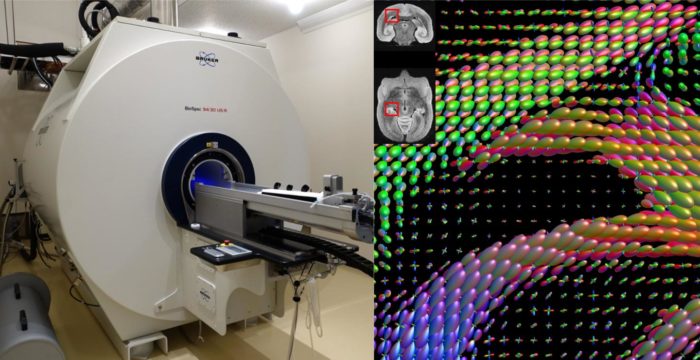 One of the great ambitious scientific projects of our time is mapping all the connections in the human brain, known as the “connectome”. It seem obvious how this would advance our understanding of neuroscience, having a similar effect as mapping the human genome on genetics and genetic medicine. The connectome is more complex than the genome, and mapping it is trickier. We are still in the stage where any significant advances in the basic technology of mapping brain connections will have a huge impact. So of course neuroscientists are researching exactly that.
One of the great ambitious scientific projects of our time is mapping all the connections in the human brain, known as the “connectome”. It seem obvious how this would advance our understanding of neuroscience, having a similar effect as mapping the human genome on genetics and genetic medicine. The connectome is more complex than the genome, and mapping it is trickier. We are still in the stage where any significant advances in the basic technology of mapping brain connections will have a huge impact. So of course neuroscientists are researching exactly that.
A recent study uses machine learning techniques to optimize the algorithms used to map brain connections using function MRI scans (fMRI). This is perhaps another example of how neuroscience and computer science are increasingly supporting each other. The researchers were using marmoset brains as their subject. First they mapped regions of the marmoset brain using a standard technique that involved injecting a fluorescent tracer into neurons then following where that tracer goes, through neuronal connections to other parts of the brain. This is perhaps the gold standard technique, but involves sacrificing the animal so that the brain can be sliced and examined microscopically. This technique, therefore, cannot be used in humans.
They then mapped the same regions of the marmoset brain using the less invasive technique of fMRI scanning, which can trace the movement of water through neuronal connections in order to map them. The fMRI method, however, is not nearly as precise as the fluorescent tracer technique. It also suffers from many trade-offs, which the researcher likened to camera settings. You can change the settings to produce very different looking pictures. The question is – which settings (which in regard to the fMRI refers to the computer algorithms that analyze the data) give the best picture of the connectome?
Continue Reading »
Dec
17
2020
 As the first crop of SARS-CoV-2 vaccines are being rolled out, we can start to see the light at the end of this pandemic tunnel. Still, in the US alone there will probably be another 200,000 deaths before we reach herd immunity. Further, as fast as this vaccine development and deployment was, it’s not clear how much faster it will bring an end to the pandemic. We will likely be 18 months into the pandemic before we have significant vaccine uptake, and that may not be far off from how long the pandemic was going to last in the first place. There is no doubt is will save lives and hasten the end, but still – only after we lost about half a million people to the virus.
As the first crop of SARS-CoV-2 vaccines are being rolled out, we can start to see the light at the end of this pandemic tunnel. Still, in the US alone there will probably be another 200,000 deaths before we reach herd immunity. Further, as fast as this vaccine development and deployment was, it’s not clear how much faster it will bring an end to the pandemic. We will likely be 18 months into the pandemic before we have significant vaccine uptake, and that may not be far off from how long the pandemic was going to last in the first place. There is no doubt is will save lives and hasten the end, but still – only after we lost about half a million people to the virus.
The question for the future, therefore, is this – is it possible to develop a vaccine even more quickly? What if we could get a vaccine out, soup to nuts, in just a couple of months. We could have ended the pandemic before it really began. The first shots could have been going out in March, protecting front-line workers and the most vulnerable. This would have dramatically slowed the spread while the general population got the vaccine. By now we would be at the tail end of distribution, not the beginning. The COVID pandemic which disrupted the world would have been more like a mild flu season.
Is this feasible? The answer is a definite yes. In fact, as is now being widely reported, it took Moderna just two days to develop their vaccine. They had the vaccine – in January. This is because Moderna has spent the last 10 years developing the mRNA vaccine technology that they used in their COVID vaccine. This, in fact, is the huge advantage of mRNA vaccines, and partly why this technology was being developed. It worked as designed. As soon as the Chinese government released the genetic sequence of the SARS-CoV-2 virus, that was all Moderna needed. They identified the sequence for the spike protein, plugged that into their vaccine platform, and voila – an mRNA vaccine against the SARS-CoV-2 virus. Actually, I’m sure it was more complex than that, but whatever the technical details, it took only two days. And the core idea here is valid – they really only needed the genetic sequence of the organism, which itself now can be done very quickly.
Continue Reading »
Dec
15
2020
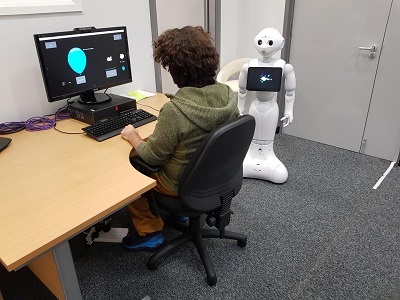 How susceptible would you be to suggestion or even manipulation by a robot, or even just a digital AI (artificial intelligence)? This is one of those questions where almost everyone thinks they would not be affected, while in reality many or even most people are. We don’t like to think that our behavior can easily be manipulated, but a century of psychological research tells a different story. There is an entire industry of marketing, advertising, and product placement based on the belief that your behaviors can be deliberately altered, and not just through persuasion but through psychological manipulation. Just look at our current political environment, and how easily large portions of our society can be convinced to at least express support for absurd ideas, simply by pushing the right buttons.
How susceptible would you be to suggestion or even manipulation by a robot, or even just a digital AI (artificial intelligence)? This is one of those questions where almost everyone thinks they would not be affected, while in reality many or even most people are. We don’t like to think that our behavior can easily be manipulated, but a century of psychological research tells a different story. There is an entire industry of marketing, advertising, and product placement based on the belief that your behaviors can be deliberately altered, and not just through persuasion but through psychological manipulation. Just look at our current political environment, and how easily large portions of our society can be convinced to at least express support for absurd ideas, simply by pushing the right buttons.
Robots and AI are likely to play dramatically increased roles in our society in the future. In fact, our world is already infused with AI to a greater extent that we realize. You have probably interacted with a bot online and didn’t realize it. For example, a recent study found that about half of twitter accounting spreading information about coronavirus are likely bots. What about when you know that an actual physical robot is the one giving you feedback – will that still affect your behavior. Apparently so.
In a recent study psychologists had subjects play a computer game which has already been validated as a marker of risk taking. The game involves hitting the space bar to inflate a digital balloon. As the balloon gets bigger, it becomes worth more digital pennies. You can cash in at any time. However, at random the balloon can also pop, and you then lose all your money. The more risk you take, the more money you can make, but the greater the chance that you lose it all, at least on that go. The researchers had subjects play the game in one of three scenarios – alone, with a robot present who told them when to begin, but then was silent, and with a robot present that would give them encouragement to keep going.
The group with the encouraging robot took significantly more risk in this game than the other two groups, which did not differ from each other. It would have been fun to have a fourth group with a human giving encouragement to see if that differed from the robot – perhaps in a follow up experiment. It’s also interesting that the robot-riskier group made more money than the other two groups. What do these results mean?
Continue Reading »
Dec
14
2020
 This week should see the first people in the US to actually receive an approved (at least EUA) vaccine to prevent SARS-CoV-2. There are three vaccines currently ready to go in the West, the Pfizer vaccine which received it’s EUA in the US on Friday and was already approved in the UK, Moderna which should get approval this week, and the Astra Zeneca vaccine which should not be too far behind. The (arguably) biggest challenge has been met – a massive scientific effort to develop vaccines in record time. This has been a collaboration between government and industry, and shows what we can accomplish with sufficient motivation (which translates into both money and easing red tape).
This week should see the first people in the US to actually receive an approved (at least EUA) vaccine to prevent SARS-CoV-2. There are three vaccines currently ready to go in the West, the Pfizer vaccine which received it’s EUA in the US on Friday and was already approved in the UK, Moderna which should get approval this week, and the Astra Zeneca vaccine which should not be too far behind. The (arguably) biggest challenge has been met – a massive scientific effort to develop vaccines in record time. This has been a collaboration between government and industry, and shows what we can accomplish with sufficient motivation (which translates into both money and easing red tape).
Now we have three further challenges in front of us. The companies need to mass produce their vaccines. This is happening with about 100 million doses ready to ship. We should have another 2 billion Pfizer doses by the end of 2021, and 1.5 billion Moderna doses. We also need to distribute the doses. This is happening through collaboration among FedEx, UPS, and the military who will get the doses to hospitals and physicians, who can then administer and track the doses. So far, so good.
The final hurdle, however, may prove the stickiest – we need people to accept the vaccine. In a December 9th survey by the AP-NORC, only 47% of Americans said they would get the vaccine, with 26% saying they would not, and 27% saying they are not sure. These and similar results have caused some to comment that the disinformation virus may prove deadlier than the COVID virus. We have a vaccine that can protect people from a deadly pandemic – this is a no-brainer. Resistance is partly due to a dedicated anti-vaccine movement that appears immune only to logic and evidence. We can only marginalize them. But these numbers go beyond the hard-core anti-vaxxers. People also fear what they don’t know, and these are the first mRNA vaccines to hit the market. So let’s review what these are, and the safety data.
Continue Reading »
Dec
11
2020
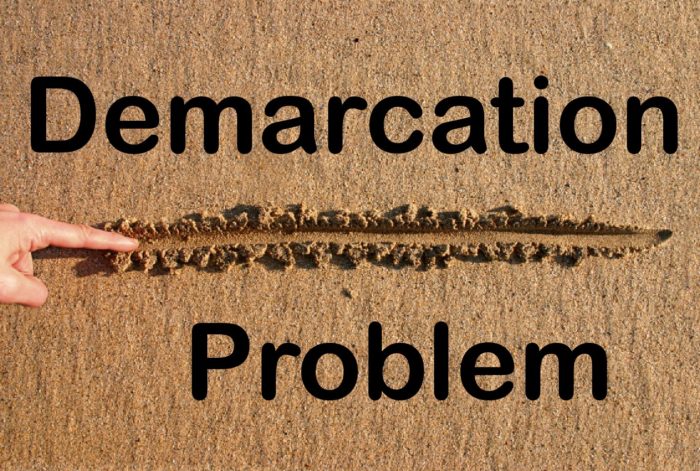 In a recent article in Medpage Today, Vinay Prasad offered his critiques of what he calls “medical skepticism”. Essentially he is talking about Science-Based Medicine and all my colleagues who engage in related activities. I am always open to criticism and love to engage about these topics. Unfortunately, Prasad’s criticism’s were based largely on his ignorance of what it is, exactly, that we do, wrapped around some huge logical fallacies. They are also arguments we have dealt with on numerous occasions before, so he could have saved time by just reading some of the very literature he felt knowledgeable enough to criticize. (And as an aside, the “skeptical of skeptics” meme is way overdone and ready to be retired.)
In a recent article in Medpage Today, Vinay Prasad offered his critiques of what he calls “medical skepticism”. Essentially he is talking about Science-Based Medicine and all my colleagues who engage in related activities. I am always open to criticism and love to engage about these topics. Unfortunately, Prasad’s criticism’s were based largely on his ignorance of what it is, exactly, that we do, wrapped around some huge logical fallacies. They are also arguments we have dealt with on numerous occasions before, so he could have saved time by just reading some of the very literature he felt knowledgeable enough to criticize. (And as an aside, the “skeptical of skeptics” meme is way overdone and ready to be retired.)
If I had to give a paraphrasing executive summary of Prasad’s article it would be this – medical skeptics should stop focusing on what they think is important, and should instead focus on what I think is important, even though I don’t really understand what it is that they do. In fact there is so much wrong with Prasad’s article it’s hard to know where to begin, but let’s start with some basic framing. Part of what Prasad is criticizing is our science communication (scicom), but again he seems to be unaware that scicom is a field unto itself, and so he is making some basic false assumptions, without being aware that he is doing so. This false assumption leads Prasad to conclude that medical experts should restrict themselves to the big problems within their area of medical expertise, without seeming to realize that scicom itself is an area of expertise.
Before I go further it is important to understand what we in the Science-Based Medicine and broader skeptical community do, and what our expertise actually is. First, we are science communicators, and this involves studying science communication itself. The big lessons of the last few decades, backed by actual research, is that the old “knowledge deficit” paradigm is mostly incorrect (not completely) and definitely insufficient. In most contexts you cannot change the way people think or behave by just giving them facts. You have to also engage with what they already believe and the complex motivations and patterns of belief that underlie them. Scicom involves, therefore, not just addressing scientific literacy but also critical thinking skills and media literacy. And in order to do this you need to understand the complex relationship between science and pseudoscience, and cognitive biases, conspiracy thinking, science-denial, and a host of other “critical thinking” skill sets.
Continue Reading »
Dec
10
2020
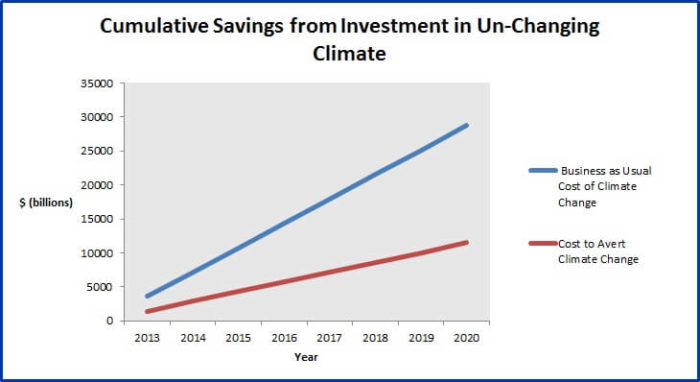 Of course there are many important issues facing the world, but arguably drastically reducing carbon emissions is near the top of the list. The 2020s is likely to be a pivotal decade for this effort, and will have a dramatic and long lasting effect. The reason for this is that we are nearing the end of our “carbon budget” – the cumulative amount of carbon we can release into the environment without causing warming >1.5C above pre-industrial levels. We are very close to exhausting this budget, and in fact most experts have set their sights on 2C as the goal, believing it is already too late to keep global warming below 1.5C. Without a major effort in this decade, we will miss the more liberal 2C target, we will have exhausted our carbon budget, and it will no longer be possible to avoid serious consequences of global warming. In fact, it’s possible it would then be too lake to stop a cascade of events that will eventually lead to 5-6C of warming through triggering threshold positive feedback events. This may take hundreds of years to play out, but it still may be unavoidable at that point.
Of course there are many important issues facing the world, but arguably drastically reducing carbon emissions is near the top of the list. The 2020s is likely to be a pivotal decade for this effort, and will have a dramatic and long lasting effect. The reason for this is that we are nearing the end of our “carbon budget” – the cumulative amount of carbon we can release into the environment without causing warming >1.5C above pre-industrial levels. We are very close to exhausting this budget, and in fact most experts have set their sights on 2C as the goal, believing it is already too late to keep global warming below 1.5C. Without a major effort in this decade, we will miss the more liberal 2C target, we will have exhausted our carbon budget, and it will no longer be possible to avoid serious consequences of global warming. In fact, it’s possible it would then be too lake to stop a cascade of events that will eventually lead to 5-6C of warming through triggering threshold positive feedback events. This may take hundreds of years to play out, but it still may be unavoidable at that point.
This is really the last decade we have to ensure a high probability of avoiding significant global warming by drastically reducing our carbon emissions. This means transforming our energy and transportation sectors into mostly carbon free technology. Industrial emissions will be harder, and require various technological advances, but any such advances there will help as well. This means, at the very least, we have to stop burning fossil fuel. This in turn means electric vehicles (with perhaps some role for hydrogen and biofuel), and an energy infrastructure built on renewable sources (wind, solar, geothermal, hydroelectric) and nuclear with some grid storage. All of this is achievable with current technology, and will reap benefits beyond climate change, such as reduced health care costs and deaths from pollution.
Often, those who push back against the suggestion that we need to make this change to our civilization a priority frame the choice before us as a false dichotomy – the climate vs the economy. More people will be harmed by the economic costs of decarbonization than will benefit from reducing carbon emissions, they claim. Often this strategy is coupled with denial of climate change itself, or unsupported assertions that climate change will not be so bad. They will often point to the most extreme predictions of climate change and argue that the entire field is “alarmist”.
Continue Reading »
Dec
08
2020
 There is a common pattern in the dubious claims made for pseudosciences and bogus belief – whenever pushed for compelling evidence, excuses are offered instead. The evidence is being covered up by a conspiracy, science cannot detect this phenomenon yet, the phenomenon is not reliable or fades in the presence of skeptics, the tape was erased (I literally heard that one), or perhaps the world is just not ready for the amazing truth. Of course the people making these claims – they know, because they are special in some way.
There is a common pattern in the dubious claims made for pseudosciences and bogus belief – whenever pushed for compelling evidence, excuses are offered instead. The evidence is being covered up by a conspiracy, science cannot detect this phenomenon yet, the phenomenon is not reliable or fades in the presence of skeptics, the tape was erased (I literally heard that one), or perhaps the world is just not ready for the amazing truth. Of course the people making these claims – they know, because they are special in some way.
Perhaps one of the weakest excuses is the notion that extraterrestrial aliens exist and are visiting the Earth, but their presence is being covered up because “the world just isn’t ready for them.” This is usually offered as an obvious statement of fact, coupled with the promise that when the world is ready, they will reveal themselves. To me this is nothing but mystery-mongering nonsense and special pleading. These claims were also recently repeated by “retired Israeli general and current professor Haim Eshed.” He claims that Israel and the US have been in contact with aliens for years:
“But Eshed insists that Trump is aware of them, and that he was “on the verge” of disclosing their existence. However, the Galactic Federation reportedly stopped him from doing so, saying they wished to prevent mass hysteria since they felt humanity needed to “evolve and reach a stage where we will… understand what space and spaceships are,”
I don’t know if something is being lost in translation here (either from Alien to Earthican, or from Hebrew to English), but I think we know what space is, and have a pretty good idea what spaceships are. The claim that there will be “mass hysteria” is, of course, unfalsifiable (until we actually do encounter space aliens). This is nothing but a prediction based upon subjective opinion. I also don’t think it’s terribly plausible.
Continue Reading »
Dec
07
2020
 Recently someone on Quora asked the question – does Chi exist? The answers were mostly positive, which is not surprising given the likely selective nature of who decided to answer. There is, however, a clear answer to this question – no. At least, that is the scientific answer, as much as science can determine a negative. We can be as confident in this answer as saying that Unicorns and Leprehauns don’t exist.
Recently someone on Quora asked the question – does Chi exist? The answers were mostly positive, which is not surprising given the likely selective nature of who decided to answer. There is, however, a clear answer to this question – no. At least, that is the scientific answer, as much as science can determine a negative. We can be as confident in this answer as saying that Unicorns and Leprehauns don’t exist.
Some of the Quora answers included, “There’s a word for it so it must exist otherwise it would have no word/s about it. Every culture-language-dialect has a word for chi and lots of words to describe the various aspects of chi.”
Of course this is not true. We have words for many concepts that simply don’t exist. See, for example, all of mythology. This may seem like an obvious point to make, and it is, but I think it is common to assume that “where there is smoke there is fire.” If a belief is common enough, it must be at least based on something real. There is also a romanticism about the notion that our treasured mythologies might be based upon some historical reality (even if the details have been altered). We want to believe that there was a real Robin Hood roaming around Sherwood forest, and that Sherlock Holmes was solving cases from 221B Baker Street.
Why would so many cultures believe in a life force like Chi if there was nothing to it? There are many reason. The first is cultural contamination – people moved around the world and their ideas moved with them, even in ancient times. Also, some ideas are obvious or represent something fundamental. It is clear that living things are different from non-living things, but pre-scientific cultures did not have the foundation of knowledge to understand this difference. So they simply attached a word to it – whatever that thing is that make life alive is the “life force” – chi (or qi) in Eastern cultures. The details, however, will vary from culture to culture. Chi was believed to be in the blood, while the Greek’s “pneuma” was in the breath, and the more modern “innate” of chiropractors flows through nerves.
Continue Reading »
Dec
04
2020
 It can be amusing when there are multiple layers of fraud in a single scam, but it’s still a scam. With the holiday shopping season upon us, there are lots of products out there exploiting fear, pseudoscience, and scientific ignorance. The “Large WiFi Router Guard” now available from Amazon is a great example. Let’s unpack how silly this product is.
It can be amusing when there are multiple layers of fraud in a single scam, but it’s still a scam. With the holiday shopping season upon us, there are lots of products out there exploiting fear, pseudoscience, and scientific ignorance. The “Large WiFi Router Guard” now available from Amazon is a great example. Let’s unpack how silly this product is.
The seller claims that the router guard, “Blocks about 90% of the EMF large WiFi routers emit including the new 5G.” I’ll get to why some people think they should do this below, but first – let’s consider how nonsensical this very idea is. The entire point of a WiFi router is to take your internet signal and then broadcast it using electromagnetic frequencies in a radius that covers your home or office, typically 50-100 feet. If you need to cover a larger area you can use a repeater, which will pick up the signal and then boost it to extend the range. You can also use a mesh WiFi system which uses multiple devices to give larger and more consistent coverage.
The obvious problem with a WiFi router blocker is that you are blocking the essential function of the router – it can’t work if you are blocking the very signal it is designed to release. The product listing says that it can do this, “without affecting router network speed and performance,” which is impossible. I guess technically you can say that the router is still working, and you have not affected it directly, but you have effectively blocked its speed and performance outside the cage. If you are blocking 90% of the signal, you are blocking 90% of the performance.
As an aside, this product is essentially a small Faraday cage. In that respect, it does actual work in that it will block EMF. A Faraday cage is essentially an enclosure of continuous conducting material. Electrical fields will essentially distribute themselves around this outside conducting material, and those fields will tend to cancel out within cage. So if you are inside a perfect Faraday cage, you are protected from even intense electrical activity happening outside the cage. You can even touch the inside of the cage safely.
This is why, by the way, if you are in your car during a bad electrical storm, or when there is a downed power line nearby – stay in your car. It will act to some degree like a Faraday cage an can protect you.
Continue Reading »
 The year 2020 will be either the hottest year on record, or just behind the hottest year, 2016. The top 10 hottest years have all been from 1998 and later, with every year starting at 2013 being in the top 10. 2020 will now knock 1998 off the list, making the 10 warmest years all since 2005. The reason 1998 stuck on the list so long is because it was an outlier El Nino year, a weather pattern that tends to produce warmer weather. Next year, 2021, is likely to be a bit cooler because it is a La Nina weather pattern, which tend to be cooler. What does all this mean for the global warming debate?
The year 2020 will be either the hottest year on record, or just behind the hottest year, 2016. The top 10 hottest years have all been from 1998 and later, with every year starting at 2013 being in the top 10. 2020 will now knock 1998 off the list, making the 10 warmest years all since 2005. The reason 1998 stuck on the list so long is because it was an outlier El Nino year, a weather pattern that tends to produce warmer weather. Next year, 2021, is likely to be a bit cooler because it is a La Nina weather pattern, which tend to be cooler. What does all this mean for the global warming debate?
 One of the great ambitious scientific projects of our time is mapping all the connections in the human brain, known as the “connectome”. It seem obvious how this would advance our understanding of neuroscience, having a similar effect as mapping the human genome on genetics and genetic medicine. The connectome is more complex than the genome, and mapping it is trickier. We are still in the stage where any significant advances in the basic technology of mapping brain connections will have a huge impact. So of course neuroscientists are researching exactly that.
One of the great ambitious scientific projects of our time is mapping all the connections in the human brain, known as the “connectome”. It seem obvious how this would advance our understanding of neuroscience, having a similar effect as mapping the human genome on genetics and genetic medicine. The connectome is more complex than the genome, and mapping it is trickier. We are still in the stage where any significant advances in the basic technology of mapping brain connections will have a huge impact. So of course neuroscientists are researching exactly that. As the first crop of SARS-CoV-2 vaccines are being rolled out, we can start to see the light at the end of this pandemic tunnel. Still, in the US alone there will probably be another 200,000 deaths before we reach herd immunity. Further, as fast as this vaccine development and deployment was, it’s not clear how much faster it will bring an end to the pandemic. We will likely be 18 months into the pandemic before we have significant vaccine uptake, and that may not be far off from how long the pandemic was going to last in the first place. There is no doubt is will save lives and hasten the end, but still – only after we lost about half a million people to the virus.
As the first crop of SARS-CoV-2 vaccines are being rolled out, we can start to see the light at the end of this pandemic tunnel. Still, in the US alone there will probably be another 200,000 deaths before we reach herd immunity. Further, as fast as this vaccine development and deployment was, it’s not clear how much faster it will bring an end to the pandemic. We will likely be 18 months into the pandemic before we have significant vaccine uptake, and that may not be far off from how long the pandemic was going to last in the first place. There is no doubt is will save lives and hasten the end, but still – only after we lost about half a million people to the virus. How susceptible would you be to suggestion or even manipulation by a robot, or even just a digital AI (artificial intelligence)? This is one of those questions where almost everyone thinks they would not be affected, while in reality many or even most people are. We don’t like to think that our behavior can easily be manipulated, but a century of psychological research tells a different story. There is an entire industry of marketing, advertising, and product placement based on the belief that your behaviors can be deliberately altered, and not just through persuasion but through psychological manipulation. Just look at our current political environment, and how easily large portions of our society can be convinced to at least express support for absurd ideas, simply by pushing the right buttons.
How susceptible would you be to suggestion or even manipulation by a robot, or even just a digital AI (artificial intelligence)? This is one of those questions where almost everyone thinks they would not be affected, while in reality many or even most people are. We don’t like to think that our behavior can easily be manipulated, but a century of psychological research tells a different story. There is an entire industry of marketing, advertising, and product placement based on the belief that your behaviors can be deliberately altered, and not just through persuasion but through psychological manipulation. Just look at our current political environment, and how easily large portions of our society can be convinced to at least express support for absurd ideas, simply by pushing the right buttons. This week should see the first people in the US to actually receive an approved (at least EUA) vaccine to prevent SARS-CoV-2. There are three vaccines currently ready to go in the West, the Pfizer vaccine which received it’s EUA in the US on Friday and was already approved in the UK, Moderna which should get approval this week, and the Astra Zeneca vaccine which should not be too far behind. The (arguably) biggest challenge has been met – a massive scientific effort to develop vaccines in record time. This has been a collaboration between government and industry, and shows what we can accomplish with sufficient motivation (which translates into both money and easing red tape).
This week should see the first people in the US to actually receive an approved (at least EUA) vaccine to prevent SARS-CoV-2. There are three vaccines currently ready to go in the West, the Pfizer vaccine which received it’s EUA in the US on Friday and was already approved in the UK, Moderna which should get approval this week, and the Astra Zeneca vaccine which should not be too far behind. The (arguably) biggest challenge has been met – a massive scientific effort to develop vaccines in record time. This has been a collaboration between government and industry, and shows what we can accomplish with sufficient motivation (which translates into both money and easing red tape). In a
In a  Of course there are many important issues facing the world, but arguably drastically reducing carbon emissions is near the top of the list. The 2020s is likely to be a pivotal decade for this effort, and will have a dramatic and long lasting effect. The reason for this is that we are nearing the end of our
Of course there are many important issues facing the world, but arguably drastically reducing carbon emissions is near the top of the list. The 2020s is likely to be a pivotal decade for this effort, and will have a dramatic and long lasting effect. The reason for this is that we are nearing the end of our  There is a common pattern in the dubious claims made for pseudosciences and bogus belief – whenever pushed for compelling evidence, excuses are offered instead. The evidence is being covered up by a conspiracy, science cannot detect this phenomenon yet, the phenomenon is not reliable or fades in the presence of skeptics, the tape was erased (I literally heard that one), or perhaps the world is just not ready for the amazing truth. Of course the people making these claims – they know, because they are special in some way.
There is a common pattern in the dubious claims made for pseudosciences and bogus belief – whenever pushed for compelling evidence, excuses are offered instead. The evidence is being covered up by a conspiracy, science cannot detect this phenomenon yet, the phenomenon is not reliable or fades in the presence of skeptics, the tape was erased (I literally heard that one), or perhaps the world is just not ready for the amazing truth. Of course the people making these claims – they know, because they are special in some way. Recently someone
Recently someone  It can be amusing when there are multiple layers of fraud in a single scam, but it’s still a scam. With the holiday shopping season upon us, there are lots of products out there exploiting fear, pseudoscience, and scientific ignorance. The “Large WiFi Router Guard” now available from Amazon is a great example. Let’s unpack how silly this product is.
It can be amusing when there are multiple layers of fraud in a single scam, but it’s still a scam. With the holiday shopping season upon us, there are lots of products out there exploiting fear, pseudoscience, and scientific ignorance. The “Large WiFi Router Guard” now available from Amazon is a great example. Let’s unpack how silly this product is.




